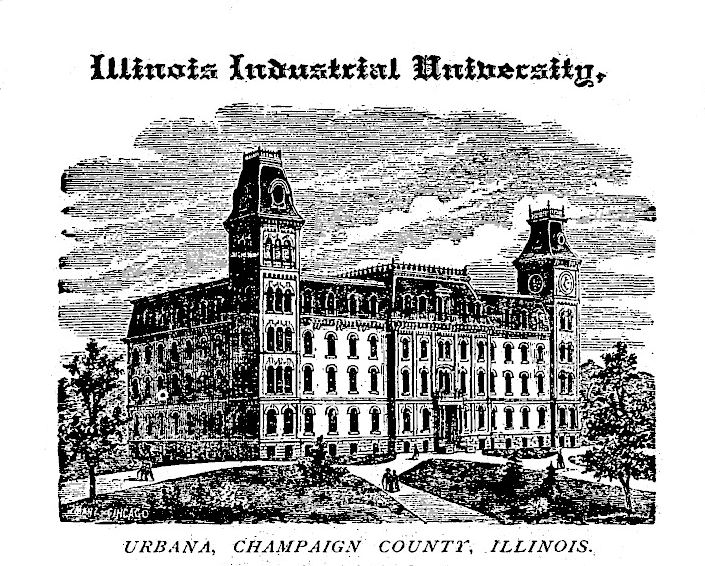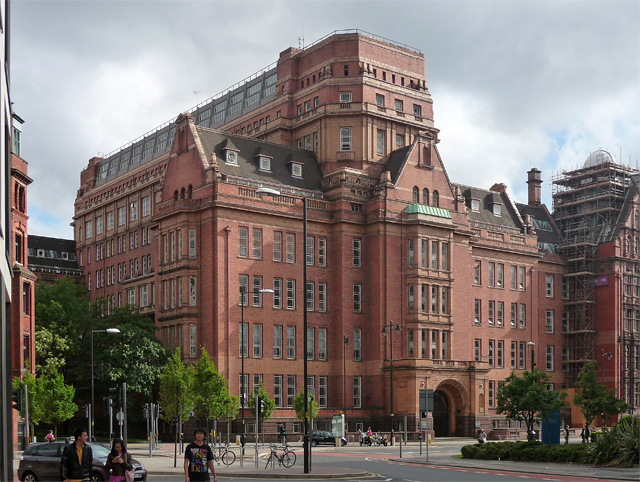|
Alexander S. Douglas
Alexander Shafto "Sandy" Douglas CBE (21 May 1921 – 29 April 2010) was a British professor of computer science, credited with creating the first graphical computer game, OXO, a version of noughts and crosses, in 1952 on the EDSAC computer at University of Cambridge. Biography Early life Douglas was born on 21 May 1921 in London. At age eight, his family moved to Cromwell Road, near what would become the London Air Terminal. A 74 bus ride for one old penny took me to Exhibition Road, from which I could go towards South Kensington station to my father's office (which is still there) and workshop (now demolished) down by what became the Lycée Français. Alternatively, I could turn north to the Science Museum – a trip I took often. In the winter of 1938–39, Douglas and his future wife Andrey Parker made a snowman in the grounds of the Natural History Museum. Douglas and his wife would go on to have two children and at least two grandsons. During the Blitz, in 1940– ... [...More Info...] [...Related Items...] OR: [Wikipedia] [Google] [Baidu] |
Computer Science
Computer science is the study of computation, information, and automation. Computer science spans Theoretical computer science, theoretical disciplines (such as algorithms, theory of computation, and information theory) to Applied science, applied disciplines (including the design and implementation of Computer architecture, hardware and Software engineering, software). Algorithms and data structures are central to computer science. The theory of computation concerns abstract models of computation and general classes of computational problem, problems that can be solved using them. The fields of cryptography and computer security involve studying the means for secure communication and preventing security vulnerabilities. Computer graphics (computer science), Computer graphics and computational geometry address the generation of images. Programming language theory considers different ways to describe computational processes, and database theory concerns the management of re ... [...More Info...] [...Related Items...] OR: [Wikipedia] [Google] [Baidu] |
IEEE Annals Of The History Of Computing
The ''IEEE Annals of the History of Computing'' is a quarterly peer-reviewed academic journal published by the IEEE Computer Society. It covers the history of computing, computer science, and computer hardware. It was founded in 1979 by the American Federation of Information Processing Societies. The journal publishes scholarly articles, interviews, "think pieces", and memoirs by computer pioneers, and news and events in the field. It was established in July 1979 as ''Annals of the History of Computing'', with Bernard Galler as editor-in-chief. The journal became an IEEE publication in 1992, and was retitled to ''IEEE Annals of the History of Computing''. The 2020 impact factor was 0.741. The current editor in chief is Troy Astarte at Swansea University in Wales. See also * ''Technology and Culture'' * '' Information & Culture'' * Computer History Museum * Charles Babbage Institute The IT History Society (ITHS) is an organization that supports the history and scholarship o ... [...More Info...] [...Related Items...] OR: [Wikipedia] [Google] [Baidu] |
Pneumonia
Pneumonia is an Inflammation, inflammatory condition of the lung primarily affecting the small air sacs known as Pulmonary alveolus, alveoli. Symptoms typically include some combination of Cough#Classification, productive or dry cough, chest pain, fever, and Shortness of breath, difficulty breathing. The severity of the condition is variable. Pneumonia is usually caused by infection with viruses or bacteria, and less commonly by other microorganisms. Identifying the responsible pathogen can be difficult. Diagnosis is often based on symptoms and physical examination. Chest X-rays, blood tests, and Microbiological culture, culture of the sputum may help confirm the diagnosis. The disease may be classified by where it was acquired, such as community- or hospital-acquired or healthcare-associated pneumonia. Risk factors for pneumonia include cystic fibrosis, chronic obstructive pulmonary disease (COPD), sickle cell disease, asthma, diabetes, heart failure, a history of smoking, ... [...More Info...] [...Related Items...] OR: [Wikipedia] [Google] [Baidu] |
Universities Central Council On Admissions
Universities Central Council on Admissions (UCCA) provided a clearing house for university applications in the United Kingdom from its formation in 1961 until its merger with PCAS (Polytechnics Central Admissions System) to form UCAS in 1993. History UCCA was created in response to concerns during the 1950s that the increase in university applications was unmanageable using the systems then in place, where each student applied individually to as many institutions as they chose. This concern led to the Committee of Vice Chancellors and Principals (CVCP) setting up an ad-hoc committee in 1957 to review the matter; this committee in its Third Report of January 1961 recommended the setting up of a central agency, which subsequently became known as UCCA. Its First and Second Reports had already made a number of recommendations aimed at harmonising admissions procedures across different universities. The name UCCA referred originally to the management board (the Central Council) overs ... [...More Info...] [...Related Items...] OR: [Wikipedia] [Google] [Baidu] |
Leslie Ronald Kay
Ronald Kay OBE (4 March 1920 – 17 May 2019) was a British University administrator who was instrumental in establishing the Universities Central Council on Admissions, and who was its chief executive until his retirement in 1985. Early life and career Ronald Kay was born in Sheffield. His father Ernest (1895-1973) was a cutler who had left school at 13 to work for the firm of George Wostenholm, where he slowly rose through the ranks to achieve the position of sales manager. His mother May (née Friskney) (1898-1946) was originally from Leicester; she taught piano. Ronald was the elder of two children; his sister Shirley (1928-1986) was nearly nine years younger. Ronald gained a scholarship to King Edward VII Grammar School, and subsequently an Edgar Allen scholarship to Sheffield University, where he read English. Graduating in 1941, he was disqualified from active service as a result of poor eyesight, and instead went to London to work for the Ministry of Shipping whe ... [...More Info...] [...Related Items...] OR: [Wikipedia] [Google] [Baidu] |
Pegasus (computer)
Pegasus was an early British vacuum-tube (valve) computer built by Ferranti Ltd that pioneered design features to improve usability for both engineers and programmers. It was originally named the Ferranti Package Computer as its hardware design followed that of the Elliott 401 with modular plug-in packages. Much of the development was the product of three men: W. S. (Bill) Elliott (hardware), Christopher Strachey (software) and Bernard Swann (marketing and customer support). It was Ferranti's most popular valve computer with 38 units being sold. The first Pegasus was delivered in 1956 and the last was delivered in 1959. Ferranti received funding for the development from the National Research Development Corporation (NRDC). At least two Pegasus machines survive today: one in The Science Museum, London and one which was displayed in the Science and Industry Museum, Manchester but which has now been moved to the storage in the Science Museum archives at Wroughton. The ... [...More Info...] [...Related Items...] OR: [Wikipedia] [Google] [Baidu] |
University Of Illinois
The University of Illinois Urbana-Champaign (UIUC, U of I, Illinois, or University of Illinois) is a public university, public land-grant university, land-grant research university in the Champaign–Urbana metropolitan area, Illinois, United States. Established in 1867, it is the founding campus and Flagship#Colleges and universities in the United States, flagship institution of the University of Illinois System. With over 59,000 students, the University of Illinois is one of the List of United States public university campuses by enrollment, largest public universities by enrollment in the United States. The university contains 16 schools and colleges and offers more than 150 undergraduate and over 100 graduate programs of study. The university holds 651 buildings on and its annual operating budget in 2016 was over $2 billion. The University of Illinois Urbana-Champaign also operates Research Park at the University of Illinois Urbana-Champaign, a research park home to innova ... [...More Info...] [...Related Items...] OR: [Wikipedia] [Google] [Baidu] |
Trinity College, Cambridge
Trinity College is a Colleges of the University of Cambridge, constituent college of the University of Cambridge. Founded in 1546 by King Henry VIII, Trinity is one of the largest Cambridge colleges, with the largest financial endowment of any college at Oxford or Cambridge. Trinity has some of the most distinctive architecture in Cambridge with its Trinity Great Court, Great Court said to be the largest enclosed courtyard in Europe. Academically, Trinity performs exceptionally as measured by the Tompkins Table (the annual unofficial league table of Cambridge colleges), coming top from 2011 to 2017, and regaining the position in 2024. Members of Trinity have been awarded 34 Nobel Prizes out of the 121 received by members of the University of Cambridge (more than any other Oxford or Cambridge college). Members of the college have received four Fields Medals, one Turing Award and one Abel Prize. Trinity alumni include Francis Bacon, six British Prime Minister of the United Kingdo ... [...More Info...] [...Related Items...] OR: [Wikipedia] [Google] [Baidu] |
Manchester Baby
The Manchester Baby, also called the Small-Scale Experimental Machine (SSEM), was the first electronic stored-program computer. It was built at the University of Manchester by Frederic Calland Williams, Frederic C. Williams, Tom Kilburn, and Geoff Tootill, and ran its first program on 21 June 1948. The Baby was not intended to be a practical computing engine, but was instead designed as a testbed for the Williams tube, the first truly random-access memory. Described as "small and primitive" 50 years after its creation, it was the first working machine to contain all the elements essential to a modern electronic digital computer. As soon as the Baby had demonstrated the feasibility of its design, a project was initiated at the university to develop it into a full-scale operational machine, the . The Mark 1 in turn quickly became the prototype for the Ferranti Mark 1, the world's first commercially available general-purpose computer. The Baby had a 32-bit Word (computer architect ... [...More Info...] [...Related Items...] OR: [Wikipedia] [Google] [Baidu] |
Manchester University
The University of Manchester is a public university, public research university in Manchester, England. The main campus is south of Manchester city centre, Manchester City Centre on Wilmslow Road, Oxford Road. The University of Manchester is considered a red brick university, a product of the civic university movement of the late 19th century. The current University of Manchester was formed in 2004 following the merger of the University of Manchester Institute of Science and Technology (UMIST) and the Victoria University of Manchester. This followed a century of the two institutions working closely with one another. Additionally, the university owns and operates major cultural assets such as the Manchester Museum, The Whitworth art gallery, the John Rylands Library, the Tabley House, Tabley House Collection and the Jodrell Bank Observatory – a UNESCO World Heritage Site. The University of Manchester Institute of Science and Technology had its origins in the Manchester Mechan ... [...More Info...] [...Related Items...] OR: [Wikipedia] [Google] [Baidu] |
Stored-program Computer
A stored-program computer is a computer that stores program instructions in electronically, electromagnetically, or optically accessible memory. This contrasts with systems that stored the program instructions with plugboards or similar mechanisms. The definition is often extended with the requirement that the treatment of programs and data in memory be interchangeable or uniform. Description In principle, stored-program computers have been designed with various architectural characteristics. A computer with a von Neumann architecture stores program data and instruction data in the same memory, while a computer with a Harvard architecture has separate memories for storing program and data. However, the term ''stored-program computer'' is sometimes used as a synonym for the von Neumann architecture. Jack Copeland considers that it is "historically inappropriate, to refer to electronic stored-program digital computers as 'von Neumann machines. Hennessy and Patterson wrote th ... [...More Info...] [...Related Items...] OR: [Wikipedia] [Google] [Baidu] |






